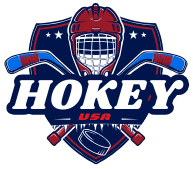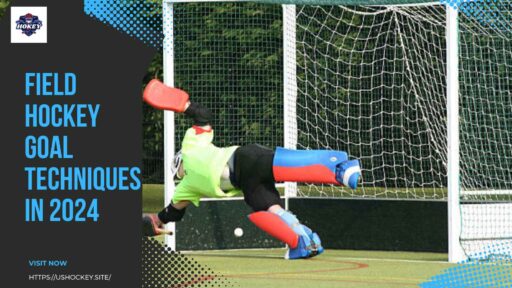Hockey is a game that incarnates speed, precision and pure athleticism; the tale of human expertise and technological progression is implicit in it. At the heart of this fast game lies an apparently simple but wonderfully complex tool – the hockey stick. Its development over the years has been about innovation, good design, and the right balance between tradition and radicalism. Fast-forward to 2024, where we are on the verge of a truly defining revolution in hockey stick technology.
This post delves into cutting-edge aspects of the hockey stick industry that may affect players, game dynamics and overall industry for better or worse. Hockey fans, sports bloggers as well as equipment manufacturers be ready for a detailed tour into your hi-tech hockey sticks realm.
Technological Advancements in Hockey Stick Field
Materials science forms a foundation upon which future hockey sticks will be based. Carbon fiber was once a game-changer. However, there are even stronger composites than that such as Graphene about to claim its supremacy over carbon fiber. These materials have unbeatable strength-to-weight ratio thus will determine how durable or high performing hockey sticks can be.
Moreover, nanotech could soon become part of manufacturing with nano-materials designed to enhance surface grip, maneuverability and shots strength of sticks making them almost indestructible yet not bulky or rigid.
Design at Molecular Level
It’s worth noting that designing new generation’s hockey sticks in 2024 might take place through aerospace engineering means. Aerodynamics (often overlooked) will be optimized to reduce drag thus increase puck velocity dramatically leading to faster movement across rink area. Weight distribution that affects ‘how they feel’ will suit different positions at very fine levels by playing style resulting into improved performance with less fatigue.
The grip technology which has hitherto depended on piecemeal use of tapes or stickies is also expected to change drastically. Expect a consolidated approach towards grip achieved through improved ergonomics and material science. The grip should be naturally and also customizable to the stick.
🌞 Weekend Vibes 🌞
How are you spending your weekend? Share your sporty adventures below! 👇📸🏆 #dragonhockey #unleashyourpotential #fieldhockey #fieldhockeygoals #fieldhockeytraining pic.twitter.com/uuGoDo1x7a
— Dragon Hockey (@DragonHockeyUK) August 26, 2023
Handling and Upmost Maneuverability
It is not about simply doing more astute tricks or flicks, improved handling implies being in control under pressure. These sticks will combine precision with power so that players can make quick changes of direction without taking any risks. Like tendons in the body, they will respond flawlessly to the user’s intentions as though they were his limbs.
For one thing, this tightens up defensive strategies or opens up offensive ones; these new sticks herald a technically better form of hockey that is also more dynamic and unpredictable than ever before.
Evolution of hockey stick fields
Hockey stick fields are a major innovation in playing surfaces for sports. Historically, hockey was played on grass or artificial turfs surfaces. However, such fields mostly have limitations including uneven bounce as well as speed variations. Hockey stick fields were invented as an alternative to such pitch conditions allowing for more predictable play environments with better ball control.
Hockey Stick Fields: The development of fields for hockey sticks began with a lot of research and testing to achieve the best compromise between adhere, ball control and player protection. Collaborating engineers and sports scientists then developed an artificial turf that most closely simulates natural grass in texture and playability while also having better durability as well as resistance to weather conditions. As a result, this innovation changed the game of hockey completely.
Benefits of Hockey Stick Fields
There are many advantages associated with playing hockey on hockey stick fields which have made the sport much better for athletes. First of all, the artificial surface provides an even consistent bounce making it easy for players to make accurate passes or execute complex movements easily. It is such predictability that enhances general flow and pace making the game more interesting both to participants and spectators.
Secondly, these fields have excellent traction capabilities that enable players to reach their full potential. Changing direction quickly while accelerating rapidly is possible on this surface leading to competitive advantage among players. Moreover, field uniformity ensures reliance on skills rather than unpredictable field conditions.
Lastly, maintenance costs on hockey stick fields are way too low compared to those spent on traditional grass fields. They have high resistance against wear hence lowering repairing or resodding needs. These advantages save time as well as money while ensuring consistency in playing surface throughout a season.
Player Performance Impacted
The introduction of hockey stick fields has had profound impacts on player performance. A controlled environment makes it easier for individual players to develop their skills effectively within a shorter period unlike before when weather was a barrier towards practicing your skill technique decision-making processes and team work.
Furthermore, improved grip and traction provided by hockey stick fields has uplifted player performance levels also. Players can now perform sharp turns, prompt stops, and swift explosive movements accurately thereby enhancing agility of their body frame overall performance improvement. This has resulted in more athletic style where players stretch physical boundaries.
The tactical aspects of this sport have been influenced by the ball predictability on hockey stick fields. There is now greater precision in planning and implementing complex passes and set plays involving the hockey ball. This offers an opportunity for more creative gameplay resulting in a more engaging experience for the players and audience.
Case Studies on Successful Hockey Stick Fields
To get a better understanding of how successful hockey stick fields can be, we will look at some case studies that demonstrate their success. The first case study involves a local youth hockey league which transformed from using natural grass field to hockey stick field. The players noticed immediate improvements in their game that included increased speed, accuracy and fun of playing. Consequently, participation levels of this league quickly soared with marked improvement in skill development among young athletes.
Another case study tells us about professional team that has included hockey stick fields into their training facilities. Among the most dramatic changes reported were improved agility, better ball control and decision-making by players within the team while performing on field. The results were evident as the team constantly topped up its scorecard over others during matches.
These case studies are evidence of the transformational effect of hockey stick fields. Players at all levels have benefited from this innovative playing surface, experiencing significant improvement in their skills and overall performance.
The difference between traditional fields and hockey stick fields
Traditional fields have their own appeal but hockey stick fields provide a number of significant advantages that distinguish them. One primary distinction is ball behavior predictability. The unpredictability of natural grass particularly due to varied weather conditions such as uneven bounce or unpredictable ball movement is not experienced in conventional fields. On the other hand, hockey Stick Fields offer a uniform playing surface where game planning can be done efficiently by players.
The maintenance cost for the two types of grounds also differs greatly. To maintain their quality, traditional grass requires regular watering, mowing, and fertilizing. Contrarily, hockey stick fields need a little care which means there is no need for watering or cutting grass on them hence reducing costs and time spent by players in field maintenance while at the same time focus on their respective games instead.
In addition to that, traditional surfaces are more prone to wear and tear especially on places with high traffic. This makes it difficult for players who can easily get injured as they play over these uneven surfaces caused by wear outs. Hockey stick artificial turf remains consistent all through the season since they are designed to withstand heavy usage thereby preventing accidents especially during games.
Hockey Stick Field Playing Tips
It will take some adjustment to play on a Hockey Stick Field than it would on traditional ones. Here are some tips that will help you adjust better and perform well on this kind of new playing surface:
Footwear: Invest in good quality hockey shoes that provide excellent grip and traction on synthetic surfaces. For perfect performance use boots meant specifically for playing hockey on Hockey Stick Fields.
Ball control: On Hockey Stick Fields with consistent ball behavior one should concentrate more on his/her ball control skills because this medium provides an avenue for precise passes, quick dribbling and accurate shooting among other techniques.
Agility and speed: Harness the added agility and speed of a hockey stick field. Practice incorporating agility drills and speed training into your work out routine to improve your reaction time and explosiveness on the pitch.
Strategic gameplay: Plan strategic moves that can be developed or setting up pieces since you know what the ball does every time it comes in contact with a player. Training on positioning, communication, teamwork are also important for exploiting opportunities on a hockey stick field.
These guidelines will help you maximize performance when playing on a Hockey Stick Field.
The future trends of hockey stick technology
Like any other type of technology, hockey stick fields continue to evolve so as to suit different requirements in sports. The future holds promising possibilities for this latest trend in hockey stick field technology; these will no doubt enhance player’s performance as well as game experience significantly.
One of the most significant aspects that is being worked upon is incorporation of smart tech into Hockey Stick Fields. Think about having sensors fitted around the field that collect data such as ball speed, players’ movements among others in real-time. This information can be used by coaches and athletes themselves to analyze their individual performances in relation to team dynamics thus improving them accordingly.
There is also a possible trend of bringing in sophisticated turf materials that replicate the feel and performance of real grass. Future hockey stick fields may therefore take the best from natural grass and synthetic surfaces.
Moreover, developments in sustainability and being green are expected to set up the future of hockey stick fields. Eco-friendly material development and manufacturing processes are underway to ensure that ice hockey can be enjoyed without environmental damage.
Conclusion
The future for Hockey Stick field in 2024 is not about just sticks, but it shall be on players, sport and larger ecosystem around this loved game. The futures are not only technical but also anthropological, psychological or even philosophical and our unyielding strive for excellence as well as competitiveness spirit thus explain such concepts.
Stay tuned, stay informed, moreover, stay ready to walk around using the Hockey Stick tomorrow! To gamers it is their tool of skill nevertheless to followers it’s a representation of a changing love. By the year 2024 however, Hockey Stick Field shall have become an interwoven tapestry of old traditions combined with new technologies; those who understand and adapt to its weave will write the next chapter in history books of this great game.



